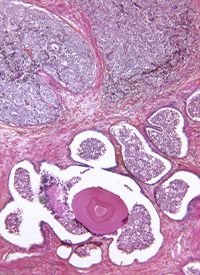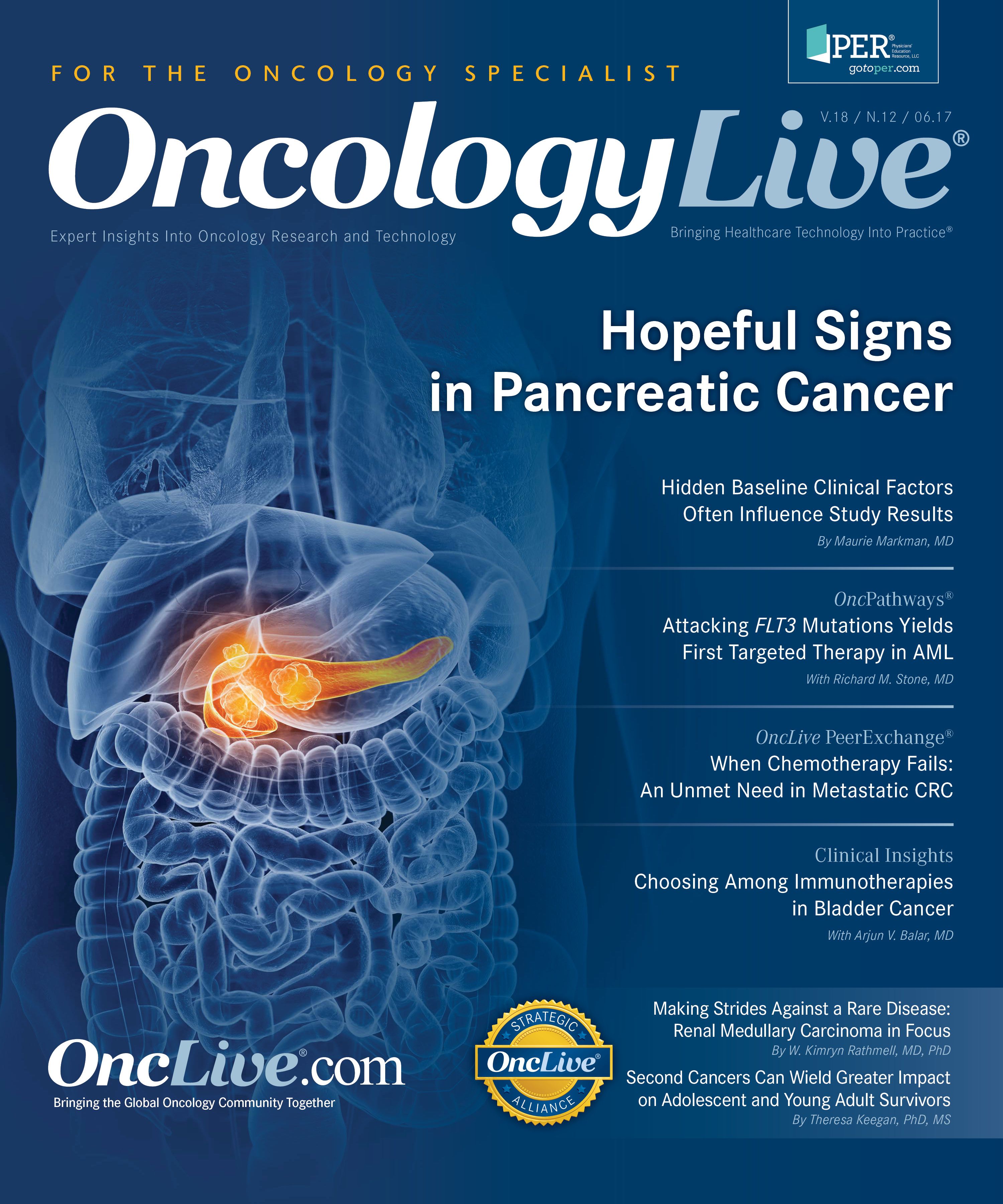Benefit Confirmed for ERBT Plus ADT in Locally Advanced Prostate Cancer
The addition of external beam radiation therapy to ADT reduced the risk of disease progression more than 70% compared with ADT alone among patients with locally advanced prostate cancer.

The addition of external beam radiation therapy (EBRT) to androgen-deprivation therapy (ADT) reduced the risk of disease progression more than 70% compared with ADT alone among patients with locally advanced prostate cancer, according to long-term study results presented at the 2017 American Urological Association Annual Meeting.1
The 8-year progression-free survival (PFS) rate among patients who were treated with EBRT plus ADT was 47.9% versus 7.0% for participants who received ADT alone (HR, 0.27; log-rank P <.0001). The 8-year overall survival (OS) rate was 65.1% in the combination arm and 56.8% in the ADT arm; however, this difference was not determined to be statistically significant (P = .43). Metastasisfree survival (MFS) was also comparable between the arms, although locoregional PFS (LPFS) was statistically significant in favor of the combination arm compared with the ADT arm (P = .01).
Key Findings in Study
The results confirm the clinical benefit of the combination strategy, said Paul Sargos, MD, a radiotherapy oncologist at the Institut Bergonié in Bordeaux, France, who presented the study results. “Achieving local control with radiotherapy in locally advanced prostate cancer has level 1 evidence, and alternatives to ADT combined with radiotherapy should only be considered in the context of a prospective randomized controlled trial,” he said. Sargos and colleagues said in their abstract that they launched the study because there is a paucity of data comparing ADT plus ERBT with ADT alone, unlike the survival benefit that has been demonstrated with the combination versus EBRT alone.The multicenter, phase III trial enrolled 273 patients who were randomly assigned to either receive ADT plus ERBT or ADT alone. Results were reported for 263 patents included in the intent-to-treat analysis, with 133 patients in the combination arm and 130 in the ADT arm.
To be eligible, participants were required to have biopsy-confirmed T3-4 prostate cancer with no metastases, a Karnofsky performance score ≥70, and be younger than 80 years old, Sargos said. Participants who had undergone transurethral resection of the prostate for obstructive syndrome were excluded.
For the ADT arm, the average age of the participants was approximately 70.5 years, and the mean Karnofsky performance status score was 96.1. Patients had a median prostate-specific antigen (PSA) score of 26.8 ng/mL. The Gleason scores were less than 7 for 67 patients (51.5%), equal to 7 for 41 patients (31.5%), and greater than 7 for 22 patients (16.9%). Additionally, 97.7% of patients had stage T3 disease.
Patient characteristics were similar in the combination arm, where the average age was 70.71 years and the mean Karnofsky score was 95.62%. The median PSA was 26.87 ng/mL. Gleason scores were less than 7 for 61 patients (45.9%); equal to 7 for 40 patients (30%); and greater than 7 for 32 patients (24%). Similar to the ADT arm, 96.2% of patients had stage T3 disease.
Participants were administered ADT consisting of 11.25 mg of subcutaneous leuprorelin, a luteinizing hormone-releasing hormone agonist, every 3 months for the duration of the 3-year study. Oral flutamide was administered at a dose of 750 mg per day for the first month of treatment. For those receiving radiotherapy, the whole pelvis was treated with EBRT at a dose of 46 Gy, and the prostate was treated with a boost from 20 Gy to 28 Gy.1
The primary objective of the study was 5-year PFS according to clinical or biochemical criteria. Secondary endpoints consisted of OS, diseasespecific survival, LPFS, MFS, time to metastatic progression, biochemical PFS, and tolerance.
“For biological PFS, there was a statistically significant benefit, with 10.9% in the ADT arm and 50.4% in the combination arm,” Sargos said. The risk of death from prostate cancer also was significantly reduced in the combination arm compared with the ADT arm.
Notably, patients who received the combination therapy experienced lower gastrointestinal and genitourinary tolerance. “Analysis of late toxicities revealed differences between arms, especially in the presence of grade ≥2 rectal toxicities in the ADT and [EBRT] arm 6 months after the end of radiotherapy,” Sargos said. In the combination arm, gastrointestinal toxicities grade ≥2 were observed in 21 patients (16.7%), and genitourinary toxicities grade ≥2 were reported in 15 patients (11.9%).1
Although the study did not establish an OS benefit with the combination, prior research has demonstrated an improvement with the addition of radiation therapy to ADT in patients with locally advanced prostate cancer.2
From 1995 to 2005, 1205 patients were randomly assigned to receive either ADT alone (n = 602) or ADT combined with radiotherapy (n = 603), with OS as the primary endpoint at a median follow-up of 6 years. Radiotherapy was administered at 65 to 69 Gy to the prostate and seminal vesicles, and 45 Gy to the pelvic nodes.
At the time of analysis, 320 patients had died: 175 in the ADT arm and 145 in the combination arm. At 7 years, the OS rate was 74% in the combination arm and 66% in the ADT arm (HR, 0.77; 95% CI 0.61-0.98; P = .033).2
References
- Sargos P, Mottet N, Richaud P, et al. Long-term androgen deprivation, with or without radiotherapy, in locally-advanced prostate cancer: results from a phase III randomized study. Abstract presented at: 2017 American Urological Association Annual Meeting; May 12-16, 2017; Boston, MA. Abstract PD72-01. http:// www.jurology.com/article/S0022-5347(17)34647-5/pdf.
- Warde P, Mason M, Ding K, et al; the NCIC CTG PR.3/MRC UK PR07 investigators. Combined androgen deprivation therapy and radiation therapy for locally advanced prostate cancer: a randomised, phase 3 trial. Lancet. 2011;378(9809):2104-2111. doi: 10.1016/S0140-6736(11)61095-7.




